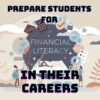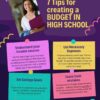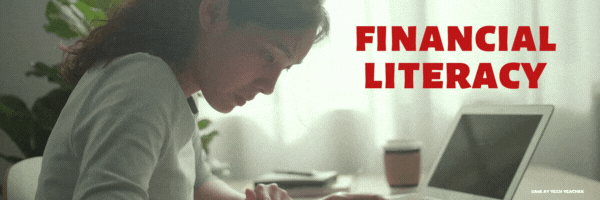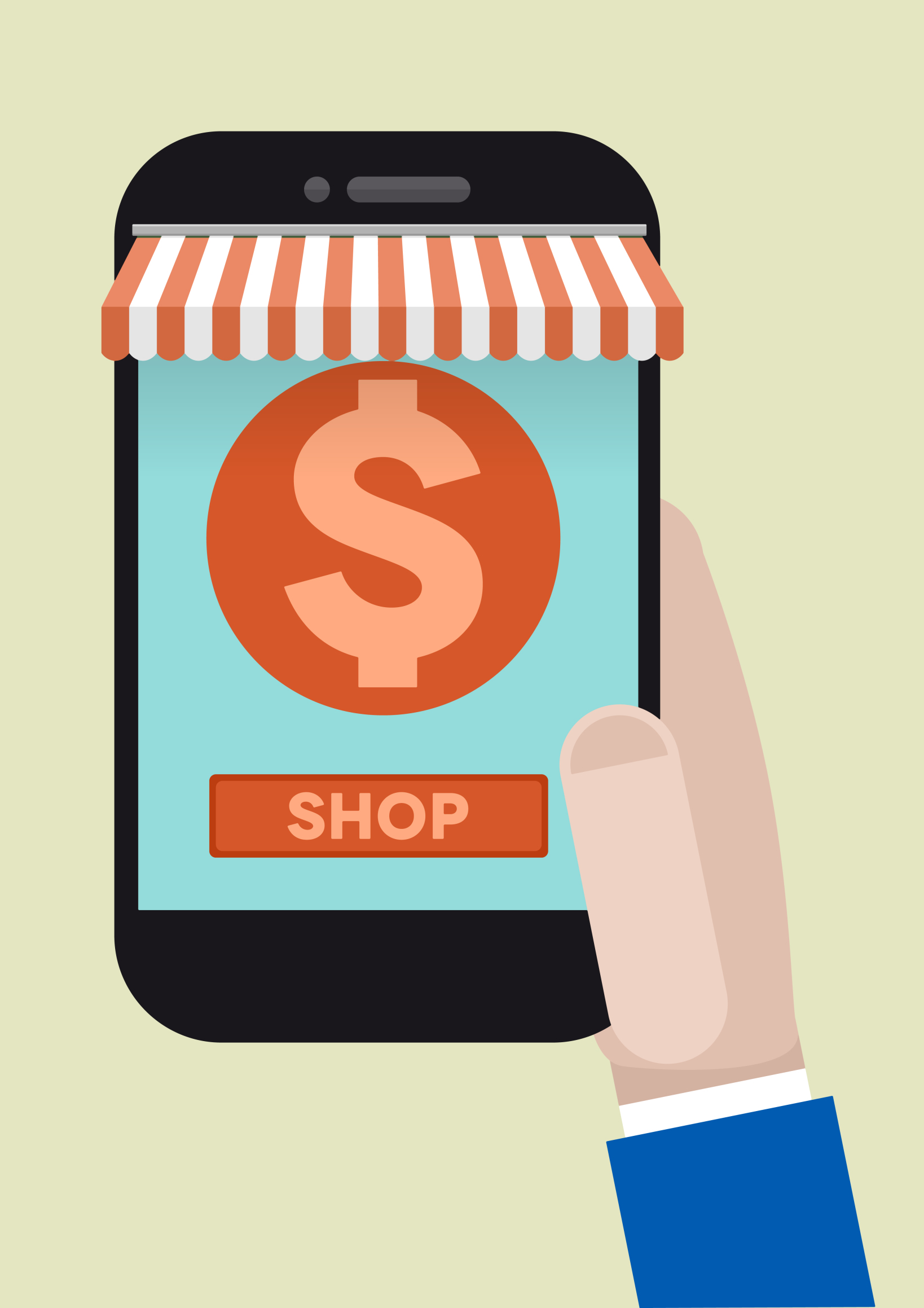Tag: financial literacy
16 Online Resources to Promote Financial Literacy
I’m going to share a story with you I heard from a colleague about Jessica, one of her star students in high school. This is a powerful reminder that academic success doesn’t translate to financial acumen.
Jessica excelled in math and science, was the captain of the debate team, and had her sights set on attending a prestigious university. With a bright future, it seemed nothing could go wrong for Jessica.
However, despite her academic prowess, Jessica had never received formal education on financial literacy. Her parents, both busy professionals, assumed she would pick up financial skills along the way, just as they had. Unfortunately, this wasn’t the case. When Jessica received her acceptance letter from her dream university, she was ecstatic and took out multiple student loans, not fully understanding the long-term implications.
In her first year of college, Jessica signed up for credit cards to cover additional expenses, including a spring break trip with friends and furnishing her new apartment. She figured she would pay it all off once she started working after graduation. By her sophomore year, Jessica was juggling her studies with a part-time job, but the credit card bills were piling up. The interest rates were high, and she often paid only the minimum amount due, not realizing how quickly the debt was compounding.
Graduation came and Jessica landed a decent job. However, the starting salary wasn’t enough to cover her living expenses, student loan payments, and the mounting credit card debt. The financial stress took a toll on her mental health, and she found herself trapped in a cycle of debt.
If Jessica had received financial literacy education in high school, she might have understood the importance of budgeting, the dangers of high-interest loans, and the benefits of starting a savings plan early. She would have been more cautious about taking on debt and more strategic in her financial planning.
If you need online sites to help teach financial literacy, here are options. Pick the ones best suited to your group (Check here for updates to the list): (more…)
Share this:
Preparing Students for Future Careers with Soft Skills Training on Financial Decisions
Last summer, I helped my niece create a cookie stand. She learned not only about baking but how to budget for supplies, manage earnings, and communicate with customers, which taught her money management while boosting her confidence in handling real-life business scenarios. These are the soft skills associated with financial literacy. The Ask a Tech Teacher team has put them together into an article to remind students–and teachers what students should know when they leave high school:
Preparing Students for Future Careers with Soft Skills Training on Financial Decisions
Teachers hold many responsibilities outside regular education. These responsibilities include imparting knowledge and equipping our students with practical life skills beyond textbooks and exams. Financial literacy is one critical area that lies under our purview.
In today’s rapidly evolving job market, where our students can earn online while still in school, imparting these skills is more crucial than ever, and we must teach our students how to manage money effectively and make informed financial decisions.
So, how can we prepare our students for future financial stability? Let’s explore some innovative strategies below.
1. Hypothetical Small Businesses: From Idea to Execution
Imagine a classroom buzzing with entrepreneurial energy where students develop and execute small business ideas.
After they brainstorm business ideas, guide them to create business plans and simulate the launch of their small enterprises. This project-based approach fosters creativity and jones essential financial skills like the following:
- Budgeting: Your students will learn how to allocate business resources wisely; this includes creating a feasible startup cost and working out the marketing expenses and operational overheads. They will grapple with trade-offs real entrepreneurs grapple with; for example, they may have to do in-house marketing and direct the marketing budget to additional stock when demand is high.
- Cash flow management: As their “businesses” operate, your students will track income and expenses. Here, they may encounter cash flow challenges like delayed payments or unexpected costs, which will require them to strategize and prepare for such incidents.
- Profit and loss: Your students will also learn how to calculate profits and losses. Here, they will learn how to streamline their business to minimize losses by minimizing operational costs, switching suppliers, dropping low-moving items, and using other crucial business strategies.
2. Teaching Them About Different Types of Loans By Stimulating An SBA Loan
After you get the hypothetical small businesses going, the next financial lesson to introduce includes scaling their businesses using different financing methods. That includes introducing your students to the world of loans, specifically Small Business Administration (SBA) loans.
The first step is defining what they are. SBA loans are facilitated by approved SBA lenders and backed by the U.S. Small Business Administration. They allow small businesses to access larger loan amounts, benefit from extended repayment terms, and secure lower interest rates. Explain to them the pros and cons of SBAs compared to other loans.
Next, walk your students through getting an SBA loan and focus especially on giving them a clear overview of SBA loan requirements.
Here are a couple of things to cover:
SBA Loan Basics
Explain the purpose of SBA loans and discuss eligibility criteria, loan terms, and repayment schedules. The eligibility requirements for businesses seeking assistance from the Small Business Administration (SBA) include the following:
- Business type: The business must be for-profit.
- Geographic scope: It should operate within the United States or its territories.
- Financing limitations: The business must be unable to secure financing through other non-government means (excluding personal funds) as of August 1, 2023.
- Equity requirement: Sufficient equity is necessary.
- Size criteria: The business must meet the SBA’s definition of a “small business.”
- Eligible industry: The business should operate in an eligible industry.
- Repayment ability: Demonstrating the ability to repay the loan is essential, considering credit score, earnings, and equity or collateral.
Loan Application Process
Your students can use their businesses to seek out hypothetical SBA loans. They can fill out the loan application forms while considering factors like creditworthiness, collateral, and business viability.
While doing this, they can also engage in risk assessment as you encourage them to think critically. What if their hypothetical business faces economic downturns? How will they repay the loan?
3. Soft Skills Training: Go Beyond Numbers and Formulas
Financial literacy isn’t just about crunching numbers; it’s also about mastering soft skills. Core soft skills ensure that a business and brand are well received. These soft skills include problem-solving skills, teamwork, and effective communication.
You can create practical scenarios for each soft skill you want them to learn and have your students roleplay; for example, to help them develop better communication skills, you can have them:
- Pitching ideas: Teach students to articulate their business concepts persuasively and confidently. This is important because whether they’re courting investors or negotiating terms, communicating effectively and using the correct language and mannerisms will be instrumental to their business success.
- Client interactions: How businesses present their product to the general public is vital to ensuring brand receptiveness. You can teach this by roleplaying client meetings and teaching your students how to explain financial options to potential investors and simplify complex terms and corporate jargon.
4. Introduce Them To Business Resources: Guiding Students Toward Financial Wisdom
Introduce students to reputable business resources. Websites like the Small Business Administration (SBA) provide loan requirements, eligibility, and application process guidelines.
Kick things up a notchy by introducing financial literacy workshops where you invite guest speakers from your community – financial advisors, bankers, or successful entrepreneurs – to share insights. Their real-world stories will resonate with students.
Endnotes
By blending project-based learning, soft skills training, and practical resources, we can empower our students by equipping them with key skills they require to be financially competent adults. They’ll grasp financial concepts and develop the resilience, adaptability, and confidence needed to make good financial decisions.
So, let’s nurture their financial skillset, one budget, one loan simulation, and one entrepreneurial dream at a time. After all, these skills aren’t just for the classroom; they’re for life.
Here’s the sign-up link if the image above doesn’t work:
https://forms.aweber.com/form/07/1910174607.htm
Copyright ©2024 askatechteacher.com – All rights reserved.
“The content presented in this blog are the result of creative imagination and not intended for use, reproduction, or incorporation into any artificial intelligence training or machine learning systems without prior written consent from the author.”
Jacqui Murray has been teaching K-18 technology for 30 years. She is the editor/author of over a hundred tech ed resources including a K-12 technology curriculum, K-8 keyboard curriculum, K-8 Digital Citizenship curriculum. She is an adjunct professor in tech ed, Master Teacher, webmaster for four blogs, freelance journalist on tech ed topics, contributor to NEA Today, and author of the tech thrillers, To Hunt a Sub and Twenty-four Days. You can find her resources at Structured Learning.
Share this:
How to Teach Financial Literacy Using Real-World Examples
Teaching financial literacy to teens can be made more effective and engaging by using real-world examples, such as interactive apps and hands-on activities like budgeting classroom dollars or planning events within a fixed budget. For instance, when I was younger, my parents set up a “family bank” where I earned interest on my allowance, helping me understand the value of saving and managing money from an early age.
How to Teach Financial Literacy Using Real-World Examples
There are quite a number of subjects that are not that easy to teach teens, especially big words like financial literacy and financial management. And helping them become money-savvy before they hit adulthood could be more than a challenge if you don’t have the best tools.
However, teaching them through real-world examples could transform not only your mentoring style but may also help make your very abstract subject very tangible, like these tricks.
Real-World Financial Lessons
Leveraging Technology: A Fun Approach to Financial Literacy
Today, maybe your best way to teach young ones about complicated concepts is through gadgets and devices. They just seem to connect better with fidgets and keyboards., which is why these innovations could be your best tools.
-
PiggyBot
It’s a video game that levels up as your students save so they can set savings goals and track progress interactively. This will make budgeting and saving lessons an engaging and visually rewarding experience.
-
Stock Market Challenge Apps
It’s an app that simulates investing in stocks with virtual currency to help students understand market fluctuations and some investment strategies. The app can turn complex financial activities into an exciting challenge.
-
Saving Spree
This is an educational game app where students make decisions on spending, saving, and donating, which can emphasize the consequences of their financial choices. It helps promote critical thinking about activities like money management.
By turning financial education 360 degrees from a chore into a thrilling game, your lessons stick, and students’ skills will grow naturally.
Use Real-World Banking Examples
It’s best to introduce your students to the world of depositing money, from savings to certificates of deposit (CDs), using simple but actual comparisons. You can explain that CDs are like secure treasure chests that build more money (the interest) if they’re only opened (because it’s locked) on the day agreed (termination date).
You can then compare savings accounts to a flexible piggy bank where they can easily get money from, but it earns less interest. This hands-on comparison can help your students grasp the benefits and the negative side of each, making financial products relatable and easier to understand.
It’s then easier to introduce them to bigger scenarios, like why it’s better to compare certificates of deposit to other accounts and consider the benefits for them when they’ll be handling more money in the future. When they get the idea, it’ll be more likely that they’ll encourage their moms and dads to invest in CDs, too.
Hands-On Activities: Creating Budgets
These are some of those fun activities that help students learn how to create personal budgets through these experienced examples.
-
Allowance Management
Say you implement a system in the classroom where your students get to earn “classroom dollars” for completed tasks or good behavior. They can then use these classroom dollars to “buy” privileges or items that the class designed beforehand.
-
Class Party Planning
You can also let your students take charge of planning an event, like a class party or a school dance, with a fixed budget. It’s best to guide them as they need to allocate funds for venue, decorations, food, entertainment, and other expenses.
-
Class Cooking Challenge
It will be a lot of fun if you challenge your students to have a cooking challenge where they’ll be given a set budget and a grocery list (draw lots). So, they need to research prices and plan a shopping list that stays within their budget.
This will be a great hands-on activity where they get to experience how their moms at home do it almost every day, budgeting and then preparing good food.
There are more ways where you can engage, challenge, and let your students experience firsthand what budgeting and holding on to money really means.
Involving Experts: Guest Speakers
You can invite financial experts to excite and challenge your students, like known financial advisors or bankers, to speak in class. A seasoned banker’s real-life stories about banking, their success accounts, and other achievement stories could make saving, investing, and credit scores more relatable.
It’s a way of giving students first hand insight into some financial concepts. And interacting with experts will show money’s real-world impact, boosting understanding and engagement. Your students are sure to remember these lessons better and for a long time.
Endnotes
It may not be easy, but as a teacher, some tips and tricks up your sleeve are part and parcel of the job. By devising engaging, fun, but 100% educational activities, you can share what it really means to “handle money” in real-life situations, whether good or bad.
With these insights, you’re on your way to teaching future financiers the fundamentals of financial literacy in a more effective manner.
–image credit to Deposit Photo
Here’s the sign-up link if the image above doesn’t work:
https://forms.aweber.com/form/07/1910174607.htm
“The content presented in this blog are the result of creative imagination and not intended for use, reproduction, or incorporation into any artificial intelligence training or machine learning systems without prior written consent from the author.”
Jacqui Murray has been teaching K-18 technology for 30 years. She is the editor/author of over a hundred tech ed resources including a K-12 technology curriculum, K-8 keyboard curriculum, K-8 Digital Citizenship curriculum. She is an adjunct professor in tech ed, Master Teacher, webmaster for four blogs, freelance journalist on tech ed topics, contributor to NEA Today, and author of the tech thrillers, To Hunt a Sub and Twenty-four Days. You can find her resources at Structured Learning.
Share this:
Harley Wade from State of Writing created 7 Tips for Creating a Budget in High School
It’s graduation time for High School seniors, that moment when they take over their own bills, budgets, and balancing income with outcomes. The Ask a Tech Teacher crew has some great times from Harley Wade on that subject:
Harley Wade from State of Writing created 7 Tips for Creating a Budget in High School
High school is the best time to start learning responsible financial management. If you get a grip on your financial literacy early, you will be able to handle your money more efficiently throughout your life. Financial literacy is defined as the ability to understand how to use financial tools, including personal financial management, budgeting, and investing. The following seven tips by Harley Wade from State of Writing will help high school students learn how to budget properly.
1. Understand Your Income Sources
The first step is figuring out how much money you’re bringing in. What does your parent(s) give you for allowance? How much money do you make from a job or a weekly babysitting or lawn mowing gig? Whenever you have a source of income, it’s good to know exactly how much you’re getting each month. This puts a strict limit on what you have to spend and what you realistically expect to save.
2. List Your Necessary Expenses
A famous Swedish proverb says, “He who buys what he does not need, steals from himself”. To avoid this scenario, list any and all of your regular expenses (phone bill, transportation, school fees, etc), separating wants from needs. Harley Wade from State of Writing suggests that you allocate some funds towards writing services for when you’re too tired or stressed by Googling “Who can write my coursework?”. This will help you find a budget-friendly writing service. Listing all your necessary expenses not only forces you to pay more attention to your priorities, but you’ll also notice where most of your money goes. It also forces you to be prepared for higher-than-normal expenses without your typical budget getting derailed.
3. Set Savings Goals
To get there, it’s essential to set goals about what you will want for yourself down the line. Here’s how you can do it:
4. Allow for Leisure Spending
There is nothing wrong with spending money on things you like! Set aside a portion of your money for entertainment and hobbies. This money can be for movies, games, or eating out with friends. Keeping money for leisure within a certain limit will ensure that you enjoy your money guilt-free rather than feeling like you are wasting it or that you are missing out on something.
5. Track Your Spending
Track everything. Here’s a simple guide on how to track your spending:
- Use a Budgeting App. Install a budgeting app on your phone to log expenses easily. Apps like Mint or YNAB automatically categorize your spending, making it easy to see where your money goes.
- Keep Receipts. Save receipts from purchases and log them weekly into a spreadsheet or notebook. This can help you remember cash transactions or small purchases that add up over time.
- Set Spending Alerts. Many banking apps allow you to set alerts for when you spend money. This can help you stay aware of your spending habits and avoid overspending.
- Review Bank Statements. Regularly check your bank statements to ensure all transactions are correct and to keep track of your spending patterns over time.
- Reflect Weekly. Set aside time each week to review what you’ve spent and compare it to your budget. Adjust your spending as needed to stay on track with your financial goals.
By consistently monitoring where your money goes, you can gain better control over your finances and make more informed decisions about your spending.
6. Review and Adjust Regularly
Plan your budget now, but leave it open for review. Every month, go back and look at your budget and ask yourself: would this budget still work for me right now? Maybe your side hustle gave you a raise. Maybe it wasn’t realistic to budget $25 per week for dinner out with friends. Maybe rent money was more flexible than expected. Regular reviews allow you to tweak your savings and spending to adapt to change.
7. Learn from Mistakes
If you go over your budget, know that you’re not alone – statistics show that over 80% of Americans exceed their monthly budget. We all blow budgets from time to time – maybe we went over our food budget last month because our cousin visited and we felt like treating her, or we didn’t manage to transfer any money into our savings account because we got caught up with something else. Rather than beating yourself up, use these as learning experiences. Work out what you did and why you did it, and try not to do it again in the future. This can make your budgeting skills a lot stronger in the long run.
Building Financial Confidence
Juggling a budget and sticking to it in high school isn’t just about the money, it is also about helping develop the confidence to become more independent. The seven tips will help you fully engage in the present while paving the road to a secure financial future. Budgeting isn’t easy, but you can move towards your financial goals one smart decision at a time.
Author: Philip Richardson
Philip is an article writer and a financial advisor. He loves sharing tips on how people can budget and manage their money. His goal is to help his readers achieve financial literacy.
Here’s the sign-up link if the image above doesn’t work:
Jacqui Murray has been teaching K-18 technology for 30 years. She is the editor/author of over a hundred tech ed resources including a K-12 technology curriculum, K-8 keyboard curriculum, K-8 Digital Citizenship curriculum. She is an adjunct professor in tech ed, Master Teacher, webmaster for four blogs, CSTA presentation reviewer, freelance journalist on tech ed topics, contributor to NEA Today, and author of the tech thrillers, To Hunt a Sub and Twenty-four Days. You can find her resources at Structured Learning.
Share this:
HS Financial Training Classes
Such an important topic, especially as we see kids aren’t graduating with basic knowledge of budgeting, paying bills, and more. CNBC has a great article on one of their blogs on this subject you’ll appreciate:
High schools, scrambling to prep Gen Z for the real world, are teaching students to make and manage money
We at Ask a Tech Teacher have written often about financial literacy. Check out these articles:
- April is Financial Literacy Month
- 7+ Websites to Teach Financial Literacy
- Financial Literacy Resources
Share this:
5 Ways Edtech Enhances Social Studies Lessons
Before I get into how edtech enhances social studies lessons, let’s ask a foundational question: What the heck is Social Studies? If you don’t teach in the United States, this might be a term you aren’t familiar with. According to Wikipedia:
“In the United States education system, social studies is the integrated study of multiple fields of social science and the humanities, including history, geography, and political science.”
Merriam Webster offers this definition:
“…the study of social relationships and the functioning of society, usually made up of courses in history, government, economics, civics, sociology, geography, and anthropology”
At primary levels, this includes history, science, and language arts. In MS and HS, it expands to cover science, mathematics, civics, economics, and maybe geography. According to Brookings, roughly nine percent of educators consider themselves social studies teachers. None arrived with a major in social studies though some did have a “Social Studies Teacher Education” degree. About 40 percent majored in history, political science, economics, or sociology with the rest in varied other degrees.
The goal of social studies is to promote civic competence — the knowledge required to be active and engaged participants in public life and the community. In the past decade, technology has become the disruptive tool of choice among teachers to make what traditionally is a droll collection of subjects energizing and inspiring.
Here are five ways edtech can kick up your social studies program:
Share this:
April is Financial Literacy Month
 The latest national data reports that while a growing number of students graduate high school, college enrollments are decreasing. Students cite a lot of reasons for that:
The latest national data reports that while a growing number of students graduate high school, college enrollments are decreasing. Students cite a lot of reasons for that:
- I can’t afford it
- I can’t get in
- It’s too hard
- I have a good job
- It isn’t worth it
Whatever is to blame, the result is that students increasingly take on the complicated economics of working and raising families without the knowledge, maturity, or experience to succeed at those. High schools are attempting to fill that gap by offering financial literacy classes that teach how to balance finite income from a job against infinite needs and wants.
Since April is Financial Literacy Month, I want to share my favorite online options, all age-appropriate for high school students and financial literacy classes:
Share this:
8 Websites For Financial Literacy Month
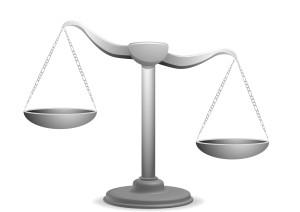 I published this about a year and a half ago, but with April’s focus on financial literacy, it’s time to repost.
I published this about a year and a half ago, but with April’s focus on financial literacy, it’s time to repost.
When kids read that America’s $18 trillion+ debt is accepted by many experts as ‘business as usual’, I wonder how that news will affect their future personal finance decisions. Do they understand the consequences of unbalanced budgets? The quandary of infinite wants vs. finite dollars? Or do they think money grows on some fiscal tree that always blooms? The good news is: Half of the nation’s schools require a financial literacy course. The bad new is: Only half require a financial literacy course.
If your school doesn’t teach a course about personal economics, there are many online sites that address the topic as mini-lessons. Some are narrative; others games. Here are eight I like. See if one suits you:
Banzai
Banzai is a personal finance curriculum that teaches high school and middle school students how to prioritize spending decisions through real-life scenarios and choose-your-own adventure (kind of) role playing. Students start the course with a pre-test to determine a baseline for their financial literacy. They then engage in 32 life-based interactive scenarios covering everything from balancing a budget to adjusting for unexpected bills like car trouble or health problems. Once they’ve completed these exercises, they pretend that they have just graduated from high school, have a job, and must save $2,000 to start college. They are constantly tempted to mis-spend their limited income and then must face the consequences of those actions, basing decisions on what they learned in the 32 scenarios. Along the way, students juggle rent, gas, groceries, taxes, car payments, and life’s ever-present emergencies. At the end, they take a post-test to measure improvement in their financial literacy.
Share this:
Teach Financial Literacy with Banzai
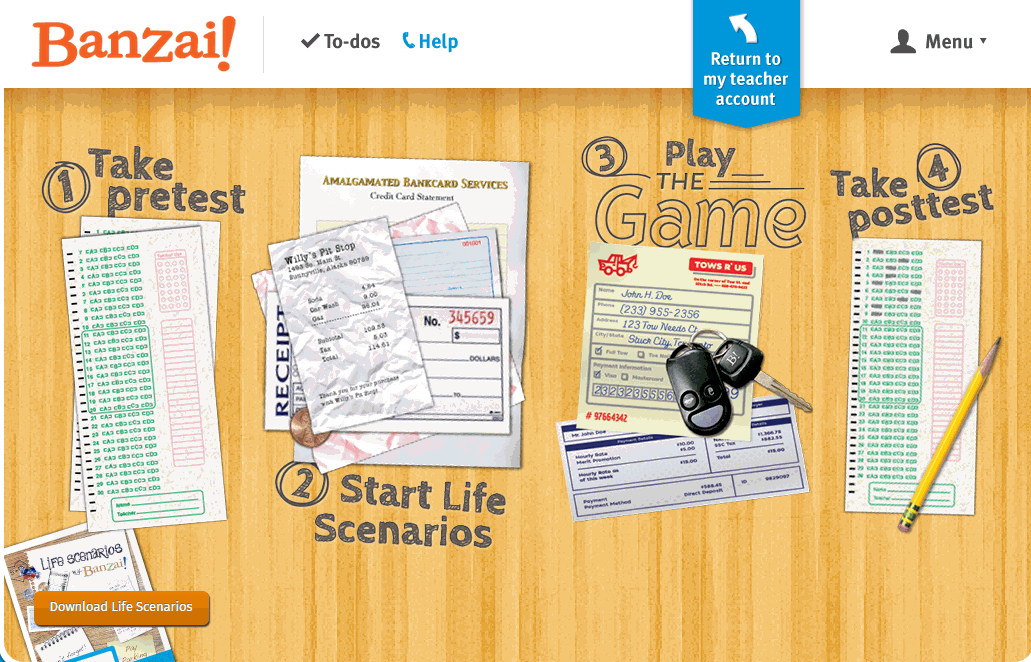 When kids read that America’s $18 trillion+ debt is accepted by many experts as ‘business as usual’, I wonder how that news will affect their own personal finance decisions. Do they understand the consequences of unbalanced budgets? The quandary of infinite wants vs. finite dollars? Or do they think money grows on some fiscal tree that always blooms? The good news is: Half of the nation’s schools require a financial literacy course. The bad new is: Only half require a financial literacy course.
When kids read that America’s $18 trillion+ debt is accepted by many experts as ‘business as usual’, I wonder how that news will affect their own personal finance decisions. Do they understand the consequences of unbalanced budgets? The quandary of infinite wants vs. finite dollars? Or do they think money grows on some fiscal tree that always blooms? The good news is: Half of the nation’s schools require a financial literacy course. The bad new is: Only half require a financial literacy course.
Banzai is a personal finance curriculum that teaches high school and middle school students how to prioritize spending decisions through real-life scenarios and choose-your-own adventure (kind of) role playing. Students start the course with a pre-test to determine a baseline for their financial literacy. They then engage in 32 life-based interactive scenarios covering everything from balancing a budget to adjusting for unexpected bills like car trouble or health problems. Once they’ve completed these exercises, they are dropped into a scenario where they have just graduated from high school, have a job, and must save $2,000 to start college. They are constantly tempted to mis-spend their income and then face the consequences of those actions, basing their decisions on what they learned in the 32 scenarios. Along the way, students learn to handle rent, gas, groceries, taxes, car payments, and life’s ever-present emergencies. When they finish, they take a post-test to measure improvement in their financial literacy.
Teachers register as many classes as necessary. Their dashboard lists all students in each class and a summary of which activities they have finished. Student work is graded by the website and updated on the teacher dashboard.



